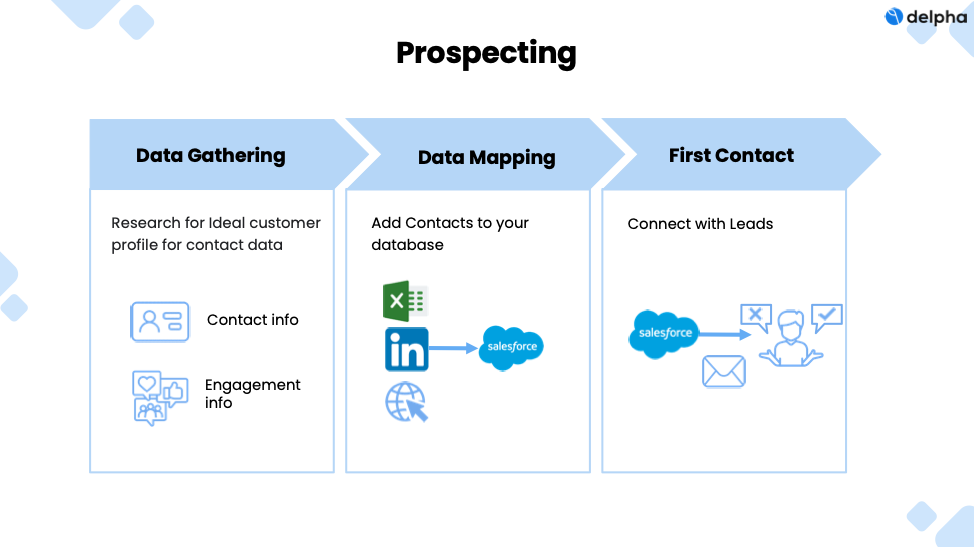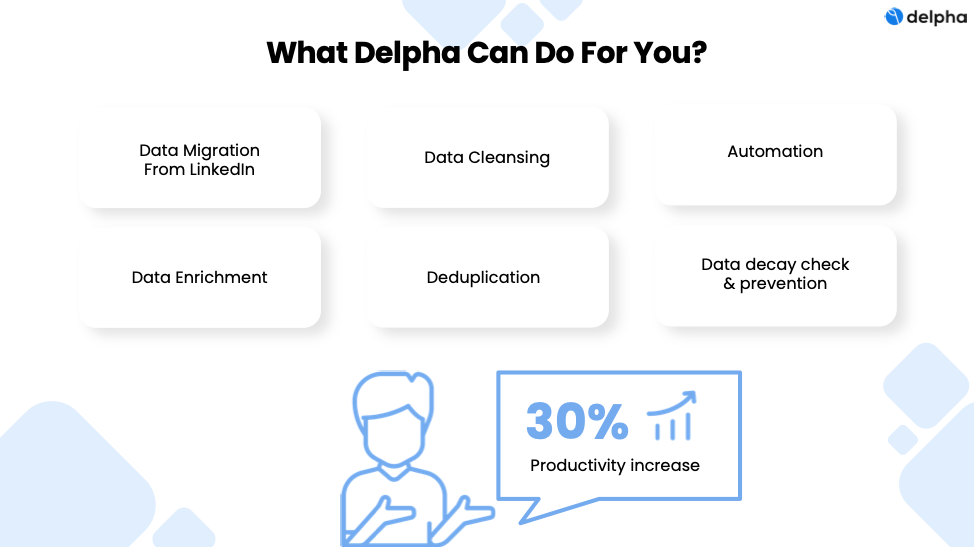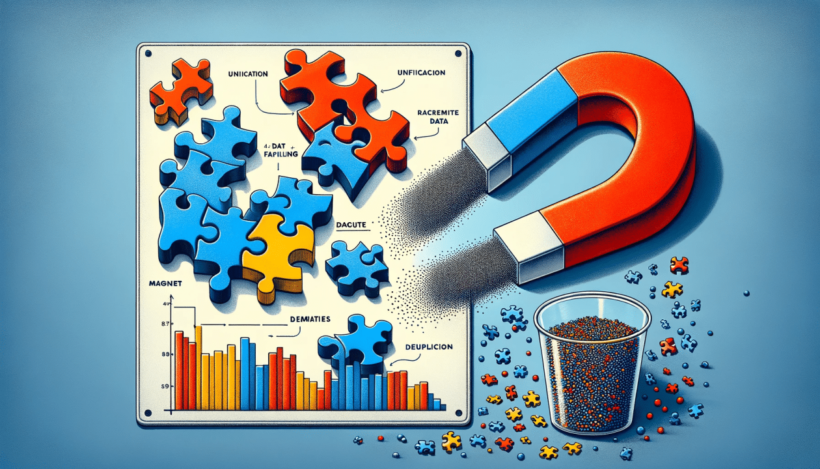Salesforce Sales Prospecting: How to Turn Data into Success
Published by Delpha on October 3, 2022
Does your sales team spend countless hours gathering prospect data and checking the accuracy of that data? If so, they are in good company, with data entry alone accounting for 71% of a sales representative’s time. However, this pulls them away from what they do best: sales.
Most salespeople know they don’t need more data. What they really need is more accurate data. Consider the following:
- Almost half (49%) of customer relationship management (CRM) data is incomplete.
- More than one-third (37%) of CRM data isn’t accurate.
- Nearly one-fourth (23%) of CRM data suffers from annual decay.
Source: Linkedin The State of Sales 2021
Even the most talented salesperson can only do so much when their data is inaccurate or incomplete, and fixing this data is a huge undertaking. But it doesn’t have to be so difficult when you rethink processes and tools around CRM data management. With the right approach and tools, you can automate manual tasks so your team can reach out to more of the right people and close more sales.
Prospecting – The three buckets
If you’re like most sales teams, sales prospecting involves the following key actions. The first is the gathering stage. You’re locating ideal customer profiles and gathering information about these prospects. During this stage, your team might also map the prospect’s interests in your products and services and capture engagement data, such as social media likes and comments. This data might come from third-party sources or various tools.

The second stage is mapping prospecting data and getting it into your CRM. Teams spend a great deal of time copying and pasting data, or they might use a tool that helps them complete this task seamlessly, but still need to evaluate the quality of the data manually.
And finally, once the data is successfully inside your CRM, the prospect list is passed to your sales development representatives (SDR) team, which reaches out to prospects. Everything completed in the first two steps is critical because it provides your sales team with the resources required to reach out to the right people, in the right roles, at the right companies.
When the data is incomplete, you face various problems that hinder productivity, such as higher email bounce rates or accidental contacting of people who are still at the company but no longer in a position to purchase.
In fact, 85% of sellers report that at least one deal was lost or delayed due to a buyer changing jobs, and 25% of buyers change roles each year.
With innovation advancements, there are new technologies that allow you to handle stage one (gathering data) and stage two (getting that data into your CRM) with far greater accuracy so that in step three (reaching out), you can target more of the right people and improve productivity.
Using automation to improve accuracy and productivity
Do you want to improve your sales prospecting best practices? If so, automation may hold the answers. Organizations use various resources to gather prospect data, with a common one being LinkedIn. Let’s say that you use LinkedIn to locate your ideal customers and import that data into your CRM. What if you could get this prospect list into your CRM with a single click and do so while checking accuracy and identifying incomplete information?
An artificial intelligence (AI) assistant allows you to import and enrich data to ensure that it’s correct before passing it along to your sales team. Benefits of using this technology include:
- Getting rid of time-consuming manual entry. An AI assistant allows you to add a large number of contacts to your CRM from sources such as LinkedIn and to enrich that data to identify missing emails, invalid emails, and more.
- Reducing data decay. As your CRM data ages, the risk of data decay increases. If you want to keep data up to date, you must proactively monitor and update it, but that is time consuming. An AI tool helps you complete this task and take the appropriate corrective action with a single click.
- Ensuring data accuracy before launching a new campaign. If you have accurate data in your CRM, you can automatically improve email response rates by reaching the right people.
Using an AI assistant such as Delpha can increase productivity by at least 30% and allows your salespeople to redeploy their talents on a higher level and to more valuable tasks.

Need help with better prospecting for sales?
Do you want to capture higher-quality prospecting insights and ensure that every piece of data is accurate before that critical first outreach? If so, watch the webinar “How to Turn Data into Prospecting Success” to see how an AI tool can make an impact.
Want to learn more about Delpha?







